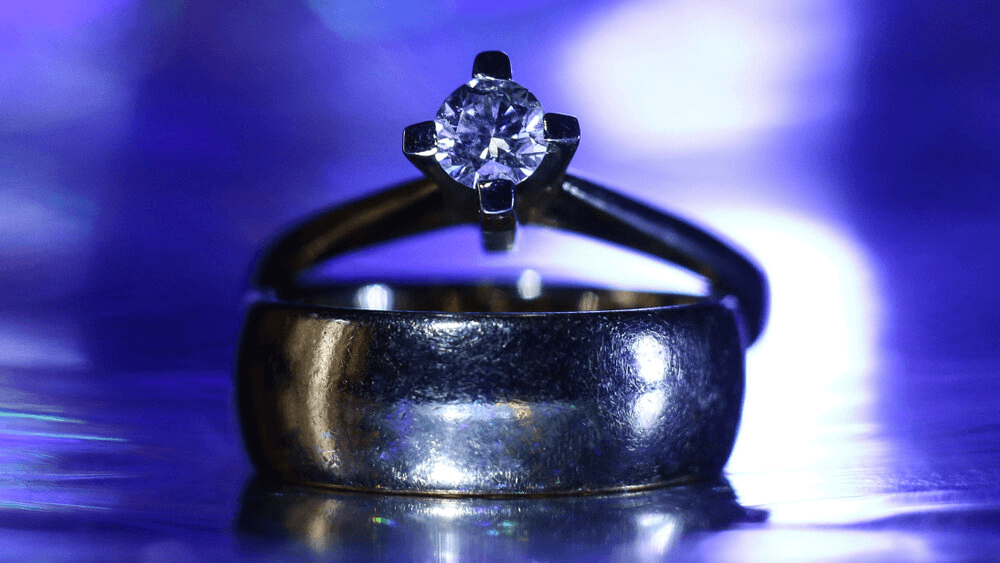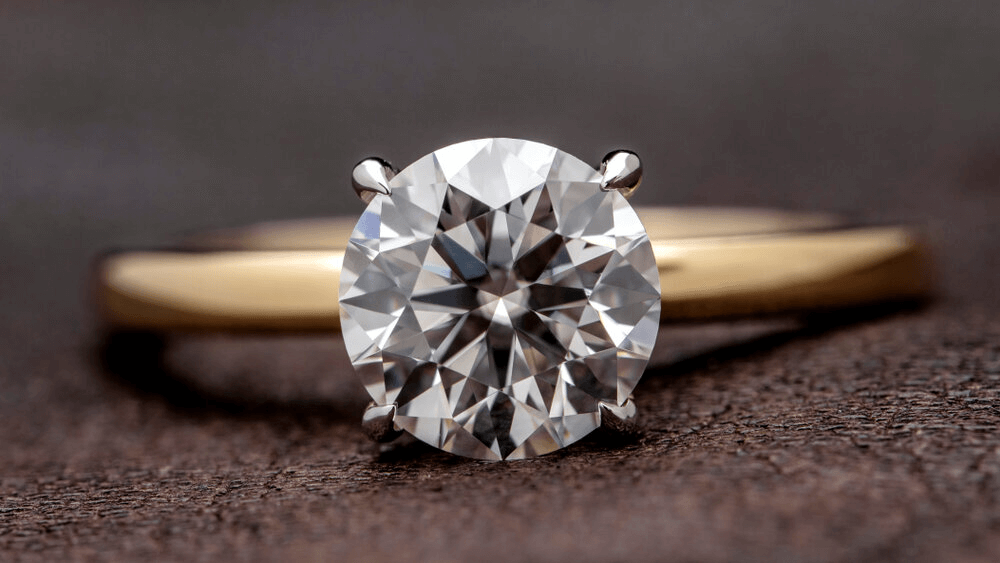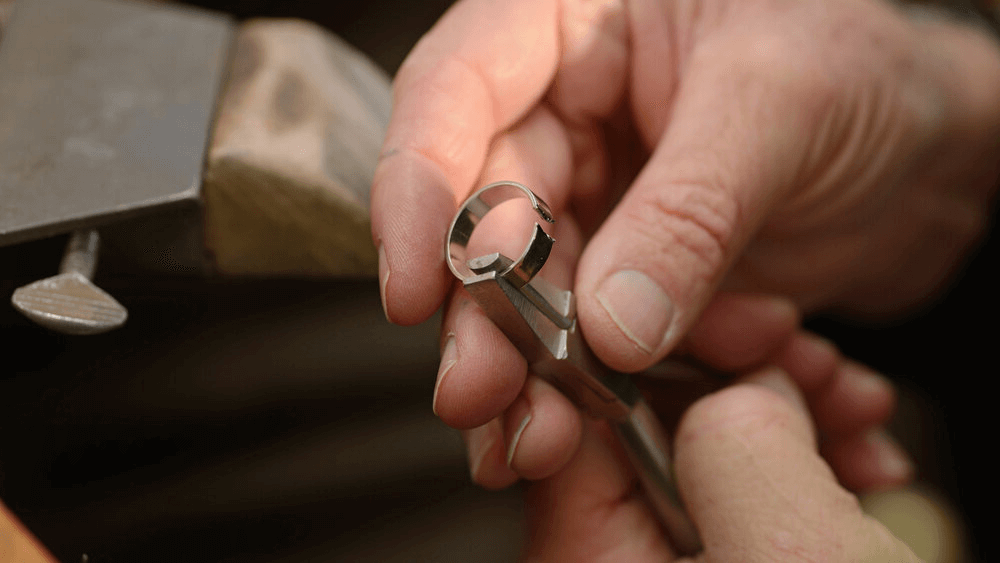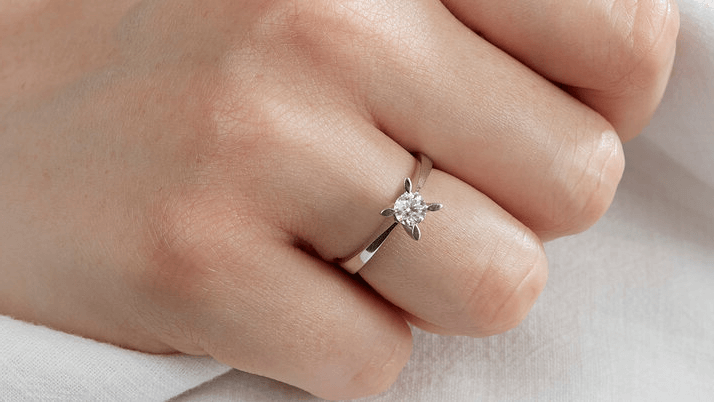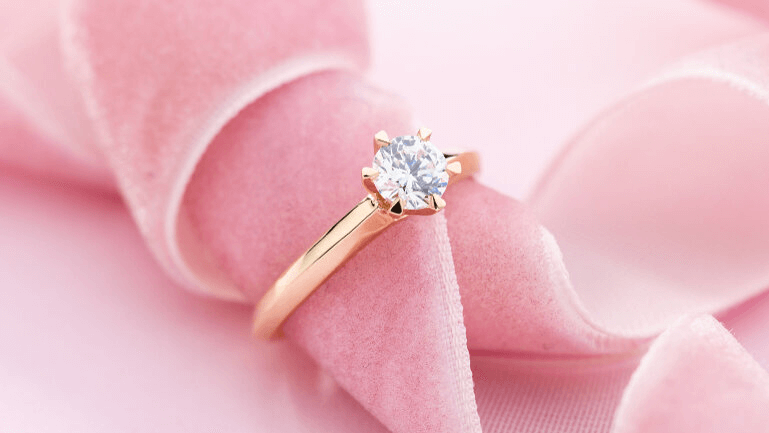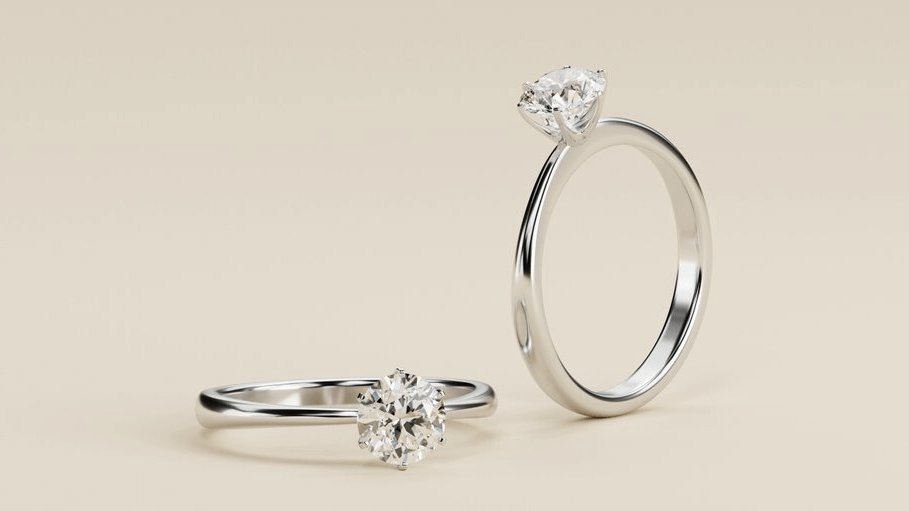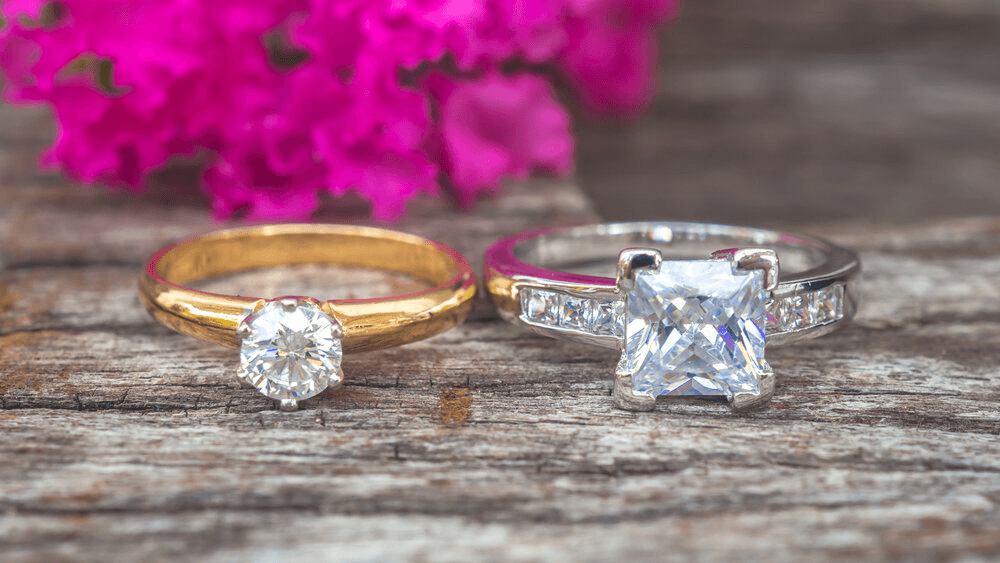Secrets of 10k Gold Rings: Surprising Insights Revealed

By Gary A.

Edited by Olivia H.
Published Dec 19, 2021
Edited on Dec 18, 2024
For those seeking a blend of durability and affordability, a 10k gold engagement ring offers a practical yet elegant option that stands the test of time.

Navigate this guide:
- 7 Quick Tips for Buying a Diamond Engagement Ring with 10k Gold
- Introduction
- Defining 10k Gold
- The Allure of 10K Gold Engagement Rings
- Durability and Everyday Use
- Debunking Myths About 10K Gold
- Our Expert Take
- 10 FAQs
Before we dive deeper into the specifics, here are some practical tips to help guide your decision-making process:
7 Quick Tips for Buying a Diamond Engagement Ring with 10k Gold
- Tip 1: Examine the 4 Cs: Focus on Cut, Color, Clarity, and Carat. The cut affects the brilliance of the diamond, color should be as minimal as possible, clarity refers to the absence of inclusions, and carat impacts the size and weight.
- Tip 2: Verify the Purity of 10k Gold: Ensure the ring is made of genuine 10k gold by checking for hallmarks like “10K”, “417”, or similar stamps. 10k gold consists of 41.7% gold and 58.3% alloy, making it durable but less pure than higher karats.
- Tip 3: Evaluate the Durability for Daily Wear: 10k gold is known for its durability due to the higher alloy content. This makes it a practical choice for an engagement ring that will be worn every day.
- Tip 4: Choose a Design That Complements the Gold and Diamond: The color and style of the 10k gold setting should enhance the diamond’s appearance. Remember, 10k gold can have a different hue compared to purer gold, which might influence the overall look.
- Tip 5: Understand the Cost-Effectiveness: 10k gold is more affordable than higher karat golds. Ensure you’re getting a fair price by comparing the costs of similar styles and quality in other gold karats.
- Tip 6: Consider Future Resizing Needs: 10k gold can be harder to resize due to its lower gold content and higher density of other metals. Choose a ring size wisely or select a design that allows for easy resizing.
- Tip 7: Plan for Maintenance: While 10k gold is durable, it still requires care to maintain its shine and prevent damage. Regular cleaning and avoiding exposure to harsh chemicals will keep the ring looking its best.
Now that you’ve got these practical tips, use Jeweler AI below to find the perfect engagement ring that suits your style and budget:
Introduction
For so many shoppers, gold is a no-brainer. Sure, there are other beautiful, lustrous, and luxurious-looking metals out there, but none of them holds a torch to gold if you’ve already fallen for its deep, rich color and unique cultural significance.
As you get closer to designing a ring of your own, 10K (or 10 karat) gold is something you’re likely to come across pretty early on in your research. While it’s definitely not the most popular choice, it’s still important to understand its unique characteristics before you make your mind up completely.
Here’s what you need to know.
Defining 10k Gold
10K jewelry features a very low ratio of gold to alloy and, at just under 42% purity, is typically regarded as the lowest purity option for shoppers.
If you have read our guide to gold already, then you will know the importance of alloying pure gold with other, stronger metals before it is used in jewelry. Doing so means that your engagement ring, wedding band, or any other gold jewelry you have is capable of withstanding more than a few hours on your body without getting bent, scratched, dented, or broken.
24K is pure gold and, naturally, adding a small amount of alloy to it lowers its purity. Adding more alloy lowers its purity significantly more until it reaches a point where the level of alloy in any solid piece of gold surpasses the level of actual gold.
This is what 10K gold is: 10 parts gold to 14 parts alloy.
Until recently, 10K was the lowest karat type that could be advertised as gold within the United States. These days, sellers simply have to be upfront about the low gold content – although most jewelers continue to treat 10K as the lowest karat type on offer.
The Allure of 10K Gold Engagement Rings
Alloying gold affects its appearance pretty significantly – sometimes for the better, sometimes for the worse. With such a low level of purity, 10K gold is quite a distinctive choice, but whether or not you value that distinctiveness, or hate it, is entirely down to you. Here’s what you need to know.
Color and Appearance
While you can be sure that 10K gold features a certain amount of real gold, it doesn’t offer the same level of vibrancy or color that most shoppers are looking for when they choose to shop for gold.
There’s nothing inherently wrong with 10K gold. It’s got some benefits, which we’ll look at below, but the main ‘downside’ to picking 10 karats rather than 14 or 18 is the fact that you could easily be disappointed by its appearance.
Why? Because alloying gold ‘dilutes’ its original color. While most of us aren’t used to seeing it, pure gold is incredibly rich in color; it’s closer to orange than yellow and, for most people, too bright to pose any real appeal for jewelry, regardless of its strength.
We’re a lot more used to seeing gold after it has already been alloyed: warm and vibrant, but more of an elegant yellow hue than a full-bodied orange.
10K gold is significantly paler than the gold you are likely used to seeing. To many people, its lack of color means that it appears a lot lower in quality than higher karat types meaning that, when it comes to the question of 10K gold vs 14K gold, most people fall in favor of the latter.
Of course, others prefer the more muted appearance of 10K gold. While there’s no denying that pieces featuring this karat type contain a lot less gold (and, accordingly, value) than 14K, 18K, and 22K jewelry, there is something to be said for the gentler, softer appearance of 10K gold.
Resilience
10K gold’s color is a lot paler than other karat types, but it won’t fade over time – or even with constant wear.
10K gold is more liable to tarnish over time, but this doesn’t have to be a permanent change, and can easily be polished away by a jeweler. Some people appreciate the patina that forms on the surface since it symbolizes the many years the item has been worn, but others prefer to preserve the ‘new out the box’ look.
The only exception to this is items of jewelry that are ‘gold plated’ or ‘gold filled’.
A piece of gold plated, for instance, is less likely to withstand the test of time. Featuring only a fine layer of gold on the very surface, many of these pieces will only last a few years before the gold begins to wear off. It’s a popular choice for lower-end jewelry, particularly if the pieces are intended to be worn on an occasional basis, and not every day.
When it comes to solid gold, there is no ‘upper layer’ to wear away – unless you’re talking about white gold, which features a thin layer of rhodium to enhance its bright color. When this wears away, the gold can begin to look yellower in places, but this rhodium layer can be easily replaced every few years, however.
Durability and Everyday Use
One of the main reasons we alloy gold in the first place is to make sure it’s strong enough to be worn. The more we alloy it, the stronger it gets, so it stands to reason that 10K gold offers some pretty compelling properties for anyone who would rather be on the safe side.
10K is the strongest karat type you’re likely to find on any online store. Unlike pure gold, you would find it pretty much impossible to bend, warp or do any significant damage to 10K gold without putting a lot of effort into it.
As a result, 10K gold is more than capable of withstanding regular wear.
For many, the strength of 10 karat gold represents its primary appeal. Rather than worrying that your wedding band will warp or scratch easily, or that your diamond will suddenly disappear from its setting, you can feel very confident that the high levels of alloy present in your ring will keep everything where it should be.
Then again, keep in mind that 14K gold is also considered more than strong enough to do the same job. Even 18 karat gold, which is 75% pure gold, is used widely within bridal jewelry – so, for many, 10K is just a step too far in the right direction.
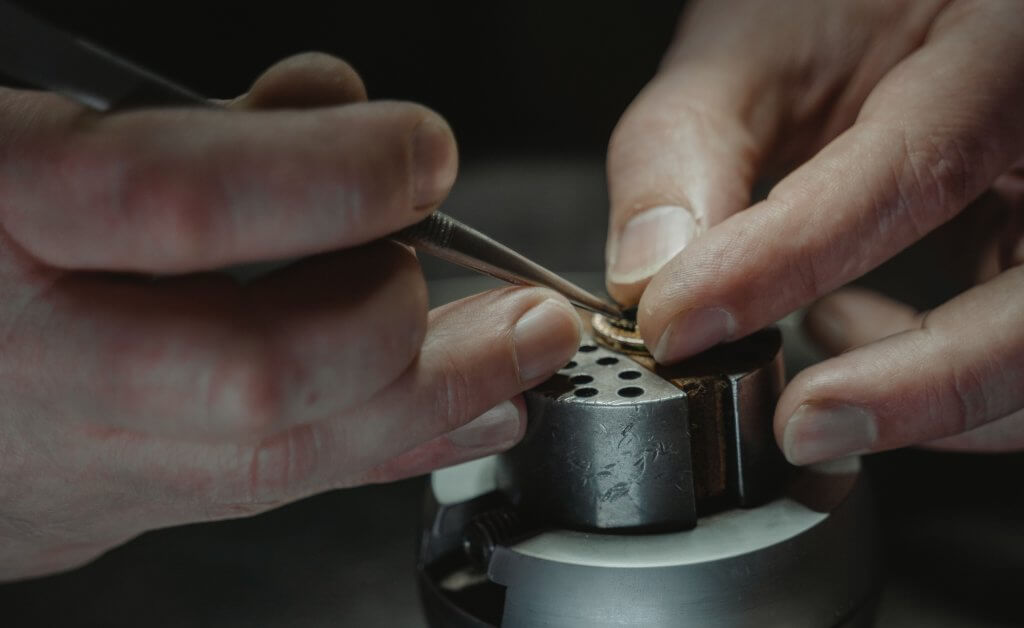
Debunking Myths About 10K Gold
Myth: 10K Gold Looks Cheap
While it is paler than higher karat types,10K yellow gold still features the distinctive color of gold that no other metal is truly able to rival.
Some people find that 10K gold carries an attractively ‘antiquated’ look. Of course, whether you see that as a mark in favor of it, or a strong mark against it, is totally down to personal preference, so don’t jump at the 10K option just because your partner favors retro styles or vintage engagement ring designs.
One of the things that makes 18 karat gold such a popular choice for engagement rings and wedding bands is its incredibly strong, vibrant, and opulent appearance. The same goes, to a slightly lesser extent, for 14K gold.
Once you see it in person, you’ll likely agree that 10K gold appears as though someone has turned down the dimmer switch. For some, it will appear cheaper; for others, it will simply appear older or duller.
Myth: You Can’t Shower in 10K Gold
A plain gold 10K band is perfectly safe to wear in the shower, but we wouldn’t recommend it for diamond engagement rings or eternity rings.
Sure, the shower isn’t capable of ruining your diamonds either, but frequently exposing your ring to soap, shampoo, conditioner, and any other products you use in the shower can affect it over time. And, if you haven’t had your prongs checked in a while, we’d hate to think of your diamond working itself loose in the water and going straight down the drain.
Our advice? Leave the wedding band on, but leave the diamond jewelry on your nightstand until you’re done.
Myth: 10K Gold is Safe For Skin Allergies
The alloys used in 18K gold are generally the same alloys used in 10K gold, but they’re used in much, much lower quantities, meaning that many people find them comfortable to wear. Of course, this depends on the severity of your allergy, but it is an option for those who want to wear gold jewelry without any irritation.
Pure gold is not much of an irritant in and of itself but, since 10K gold features a higher ratio of alloy to gold – alloys like nickel, zinc, and copper – it’s a poor choice for those with sensitivities.
Because of its higher purity, platinum is often considered the best choice for brides or grooms with skin sensitivities.
Myth: Rose Gold Can’t be 10K
Rose gold is created by combining the yellow of gold with the reddish tone of copper, as well as the bright hue of silver. As with any color combination, the quantities of each color used will affect the final color, and its intensity.
18K rose gold features the strongest color – an eye-capturing, warm blush color that still bears a strong resemblance to traditional gold. Once again, 14K represents a sweet spot for many shoppers, with a distinctly rosy blush that so many of us are looking for.
Once again, 10K represents the dullest in terms of intensity and hue. It’s a beautiful color, but not necessarily what we set out looking for when we’ve got rose gold on our minds. This karat type is a popular choice for everyday jewelry, but not so much for bridal pieces like engagement rings or wedding bands.
Our Expert Take
10K gold is, after all, a lot cheaper than higher karat types. What’s more, there’s very little doubt that it’s going to last you the rest of your lives – and several generations after that. It’ll keep your diamond safe and still offer the distinctive yellow of gold.
A lot of people wouldn’t consider 10K worth the investment, and would much rather move up to 14K in order to invest in a gold ring that features more gold than alloy. That’s not to say, however, that it doesn’t hold value for some shoppers – or that you should write it off just because other options are more popular.
10 FAQs
- Q: What is 10k Gold?
- A: 10k gold is a gold alloy containing 41.7% gold and 58.3% other metals like copper and silver. It’s known for its durability and affordability.
- Q: Is 10k Gold Worth More Than 14k Gold?
- A: No, 10k gold is not worth more than 14k gold. The value of gold increases with its purity, making 14k gold more valuable due to its higher gold content.
- Q: Can I Wear 10k Gold in the Shower?
- A: It’s not recommended to wear 10k gold in the shower regularly. Although durable, exposure to water and chemicals can cause discoloration and damage over time.
- Q: Is 10k Gold Good for Everyday Wear?
- A: Yes, 10k gold is suitable for everyday wear due to its high durability and resistance to scratching and bending.
- Q: What’s the Lowest Karat of Gold Available?
- A: The lowest karat typically available for jewelry is 10k gold, consisting of 41.7% gold.
- Q: How Do I Know if My Gold is 10k?
- A: Check for hallmarks like “10K”, “417”, or similar stamps on the jewelry, which indicate it is made of 10k gold.
- Q: Does 10k Gold Tarnish?
- A: 10k gold can tarnish over time, especially if exposed to chemicals and not properly cared for. Regular cleaning can maintain its appearance.
- Q: Is 10k Gold Allergic?
- A: 10k gold contains alloys that can sometimes cause allergic reactions, especially in people sensitive to metals like nickel.
- Q: Can 10k Gold Be Resized?
- A: Yes, 10k gold can be resized, but it may be more challenging than higher karat gold due to its lower malleability.
- Q: How Do I Clean 10k Gold?
- A: Clean 10k gold with a solution of warm water and mild dish soap, gently scrubbing with a soft brush, and then drying with a soft cloth. Avoid harsh chemicals.
Explore the beauty and practicality of 10k gold with Jeweler AI – your personal guide in the world of exquisite jewelry.
FOLLOW-UP GUIDE SERIES

